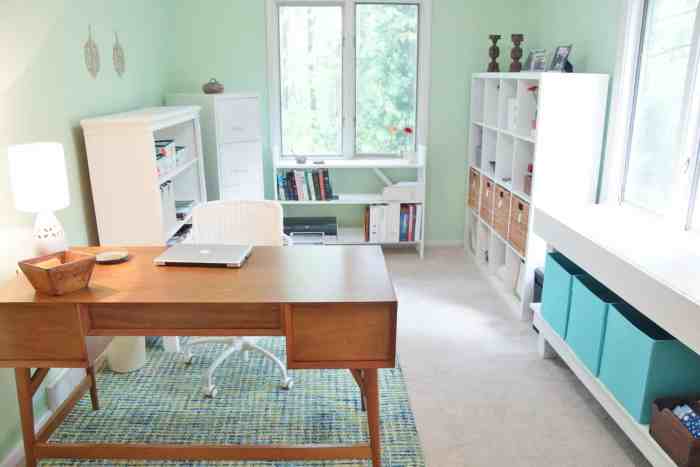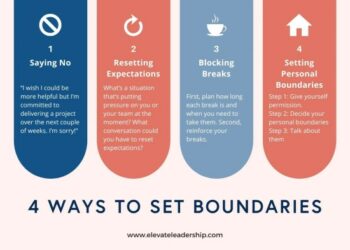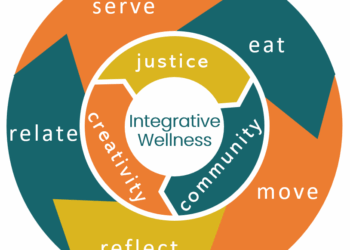Embark on a journey to explore the intersection of design and mental health with a focus on creating a home office that nurtures well-being. Delve into the impact of a thoughtfully curated workspace and discover how ergonomic considerations, nature integration, and personal touches can elevate your work environment.
Importance of a Thoughtfully Designed Home Office
Creating a thoughtfully designed home office goes beyond just aesthetics; it can significantly impact your mental health and overall well-being. The physical environment in which you work plays a crucial role in determining your mood, focus, and productivity levels.
Impact of the Physical Environment on Mental Health
The layout, lighting, colors, and overall ambiance of your home office can either boost or hinder your mental health. For example, cluttered spaces can lead to feelings of stress and overwhelm, while natural light and plants can create a calming and positive atmosphere.
Enhancing Productivity and Well-being
- Optimal Ergonomics: Investing in a comfortable chair and adjustable desk can prevent physical discomfort and improve focus.
- Personalization: Adding personal touches like photos or artwork can create a sense of ownership and increase satisfaction with your workspace.
- Organizational Systems: Implementing storage solutions and decluttering regularly can reduce distractions and promote a clear mind.
Design Elements for Positive Mental State
- Color Psychology: Choosing calming colors like blue or green can promote relaxation, while pops of yellow or orange can boost creativity.
- Natural Elements: Incorporating natural materials like wood or stone can connect you to the outdoors and improve mental well-being.
- Zoning: Creating distinct areas for work, relaxation, and breaks can help maintain boundaries and prevent burnout.
Ergonomic Considerations for Mental Health Support

Creating a workspace that prioritizes ergonomic considerations is crucial for supporting mental health.
Importance of Ergonomic Furniture
Ergonomic furniture, such as an adjustable chair and desk, can significantly impact mental health by promoting proper posture and reducing physical strain.
Proper Lighting and Ventilation
Good lighting and ventilation are essential for a healthier workspace. Natural light can boost mood and productivity, while proper ventilation ensures fresh air circulation, contributing to overall well-being.
Tips for a Comfortable Ergonomic Setup
- Adjust your chair and desk to ensure proper alignment of your body while working.
- Position your computer screen at eye level to reduce strain on your neck and eyes.
- Incorporate standing breaks throughout the day to avoid prolonged sitting, which can lead to physical discomfort and mental fatigue.
- Add supportive accessories like wrist rests and footrests to enhance comfort and prevent strain.
- Consider investing in a sit-stand desk to alternate between sitting and standing for improved circulation and energy levels.
Incorporating Nature and Biophilic Design
Integrating nature and biophilic design elements into a home office can have significant benefits for mental health by creating a calming and rejuvenating environment.
Benefits of Biophilic Design
Biophilic design is based on the concept of bringing nature indoors to improve well-being. By incorporating natural elements into the workspace, such as plants, natural light, and nature-inspired textures, individuals can experience reduced stress levels, increased creativity, and improved focus.
Ways to Integrate Natural Elements
- Plants: Adding indoor plants can help purify the air, increase oxygen levels, and create a sense of tranquility.
- Natural Light: Maximizing natural light exposure in the home office can enhance mood, regulate circadian rhythms, and reduce eye strain.
- Nature-Inspired Textures: Incorporating materials like wood, stone, or natural fibers can evoke a sense of connection to the outdoors and promote relaxation.
Positive Influence of Nature on Mood
Research has shown that exposure to nature can positively influence mood and mental well-being. For example, studies have found that having plants in the workspace can reduce anxiety and increase feelings of happiness. Additionally, natural light has been linked to improved mood and productivity, while nature-inspired textures can create a sense of comfort and calmness.
Personalization and Creativity in Home Office Design
Personalizing your home office with decor and artwork can have a significant impact on your mental well-being. It allows you to create a space that reflects your personality and interests, making it a more comfortable and inspiring environment to work in.
Role of Color Psychology
Color psychology plays a crucial role in creating a soothing and inspiring workspace. Different colors can evoke different emotions and affect your mood and productivity. Here are some tips on using color in your home office:
- Blue: Known for its calming effect, ideal for promoting focus and productivity.
- Green: Associated with nature and tranquility, promoting feelings of balance and harmony.
- Yellow: Energizing and uplifting, can boost creativity and positivity.
- Neutral tones: Create a sense of calm and sophistication, ideal for a minimalist and clean workspace.
Incorporating Personal Touches
Adding personal touches to your home office can make it a reflection of your personality and interests. Here are some tips on how to personalize your workspace:
- Displaying photos of loved ones or favorite travel destinations can evoke positive emotions and create a sense of connection.
- Incorporating items that inspire you, such as motivational quotes or artwork, can boost creativity and motivation.
- Showcasing hobbies or interests through decor elements can make the space feel more inviting and comfortable.
- Organizing your workspace in a way that reflects your workflow and preferences can enhance productivity and efficiency.
Conclusion
In conclusion, crafting a home office that prioritizes mental health is not just about aesthetics but also about fostering a conducive space for productivity and positivity. By incorporating elements that resonate with you, you can create a sanctuary that supports your overall well-being.
FAQ Resource
How does color psychology influence mental well-being in a home office?
Color psychology plays a significant role in setting the mood of a space. Using calming colors like blues and greens can promote relaxation and focus, while vibrant hues like yellow can enhance creativity and energy levels.
What are some examples of design elements that can promote a positive mental state in a home office?
Incorporating natural light, decluttering the space, adding plants for a touch of nature, and personalizing the decor with meaningful items are all effective ways to create a uplifting atmosphere.
How can biophilic design benefit mental health in a home office setting?
Biophilic design, which integrates natural elements, has been shown to reduce stress, improve cognitive function, and enhance overall well-being by connecting individuals with nature within their workspace.










